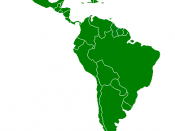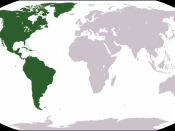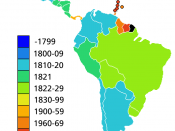Over the course of the past half-millennium, the 33 countries that now comprise Latin America and the Caribbean have gone through drastic change. Since the discovery of the New World in 1492, each country has gone through some level of colonization by a European power and transition to its current state. During this period the regions have seen political, social, religious and economic transformations of various degrees. Nevertheless, many scholars argue that regardless of the changes encountered, many are merely on the surface with little to no meaningful change instilled. A Variety of leaders have attempted to improve their country by both conservative and liberal means. Despite these attempts, though, the underlying foundation of colonial ideals remains.
The colonial period began with the discovery of Hispaniola by Christopher Columbus in 1492 and most Latin American countries gained their independence in the nineteenth century. The colonization of Latin America and the Caribbean was dominated by the Iberian countries with small colonies established by the French, English and Dutch.
Regardless of the nationality of the colonizers, almost all of the colonies shared basic characteristics, which have persevered over time in some way or another. It is possible to organize the traits of these colonies into four distinct categories: economic development, religious and social mixing, racial and ethnic mixing and political structures.
There were two basic industries found in the New World that shaped their economies: agriculture and mining. Both of these required tremendous labor input to match the demand of continental Europe. Goods such as sugar, cotton, coffee, indigo, tobacco, silver and copper were produced and exported in great quantities. At a very early point in the development of the colonies it was understood that the European settlers weren?t willing to do the physical labor themselves; instead African slaves were brought to...


